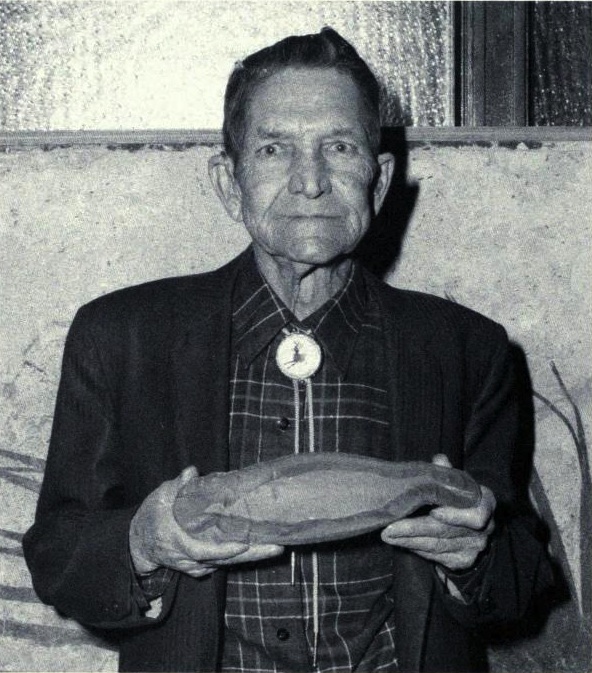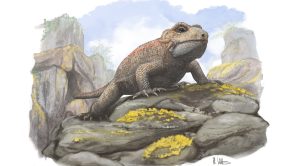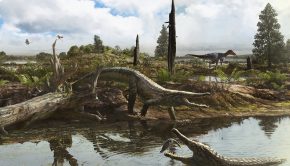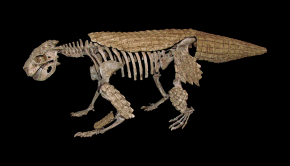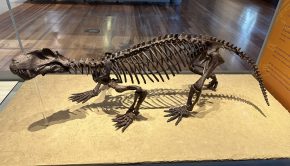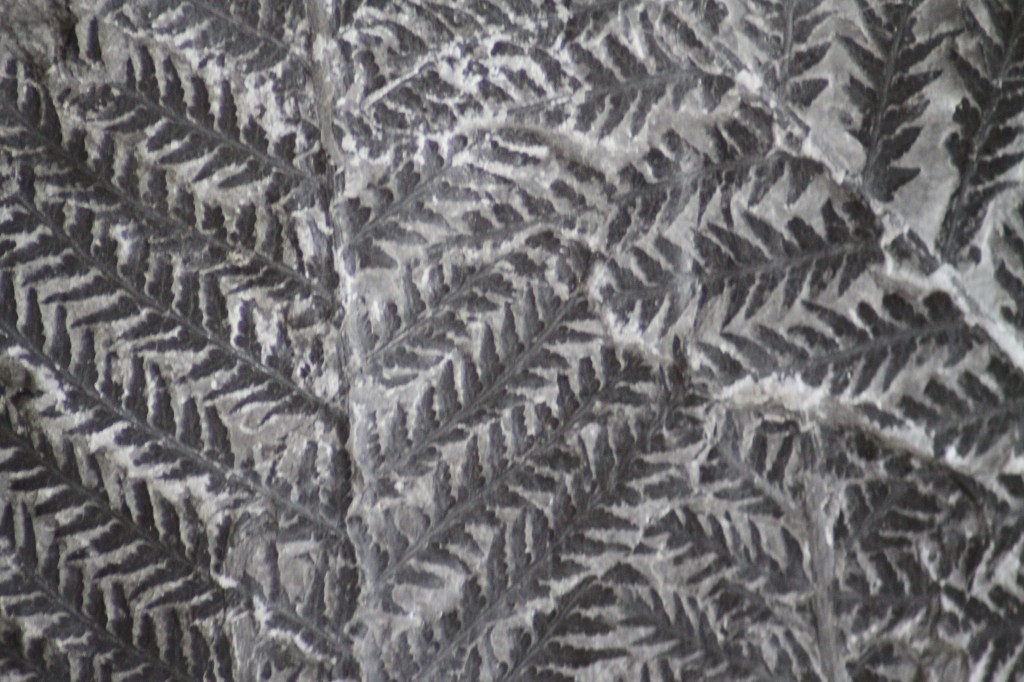Episode 63: Return of the Tully Monster
Science is a process and so the door to the revision and refinement of hypotheses must always be left open. From the research discussed in our last episode, the newspapers would have you believe that the mystery of the Tully Monster had finally been solved once and for all. Yet only a couple of weeks later, another new study has weighed in on the identity of this enigmatic fossil.
This episode is released to coincide with the publication of a new paper in Nature and lead author Thomas Clements, University of Leicester, joins us to discuss his new insights from looking into the eyes of the Tully Monster
Podcast: Download (Duration: 38:15 — 52.8MB)

Eugene Richardson, Curator of Invertebrate Paleontology and Tibor Perenyi, scientific illustrator, creating a model of the Tully Monster, Tullimonstrum for exhibit. Image: © The Field Museum, GEO82825, Photographer John Bayalis.

Thomas and Prof. Sarah Gabbott on an exposure of the Francis Creek Shale Member looking for fossiliferous nodules. There are only a handful of sites where collecting nodules is possible due to the height of the river and they are nearly all of them on private land.
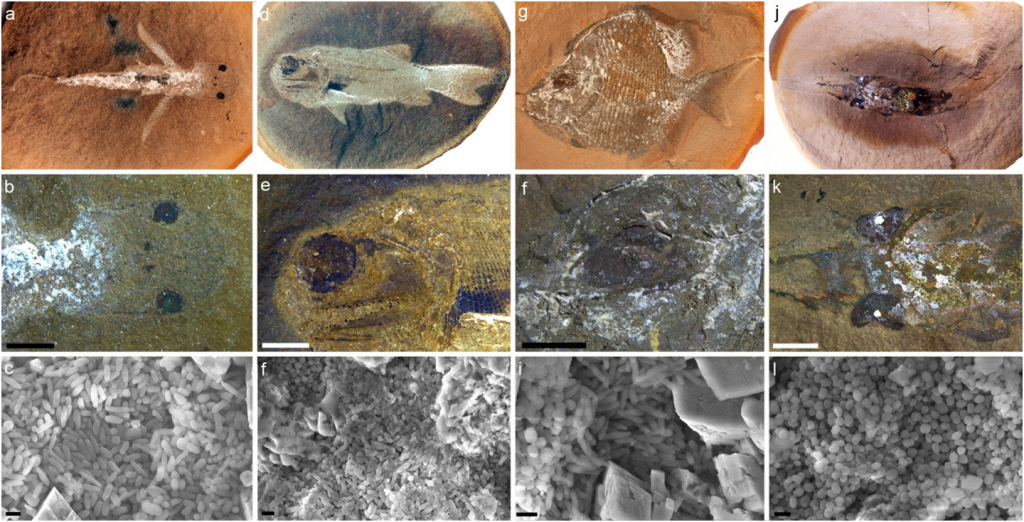
Of all the Mazon Creek fossils, Clements et al. discovered that the vertebrates consistently preserved fossilised pigments. Here are examples of several different types of fish (a, d and g) and the sharks Bandringia (j), with details of their eyes (b, e, f and k) and melanosomes (c, f, i and l).
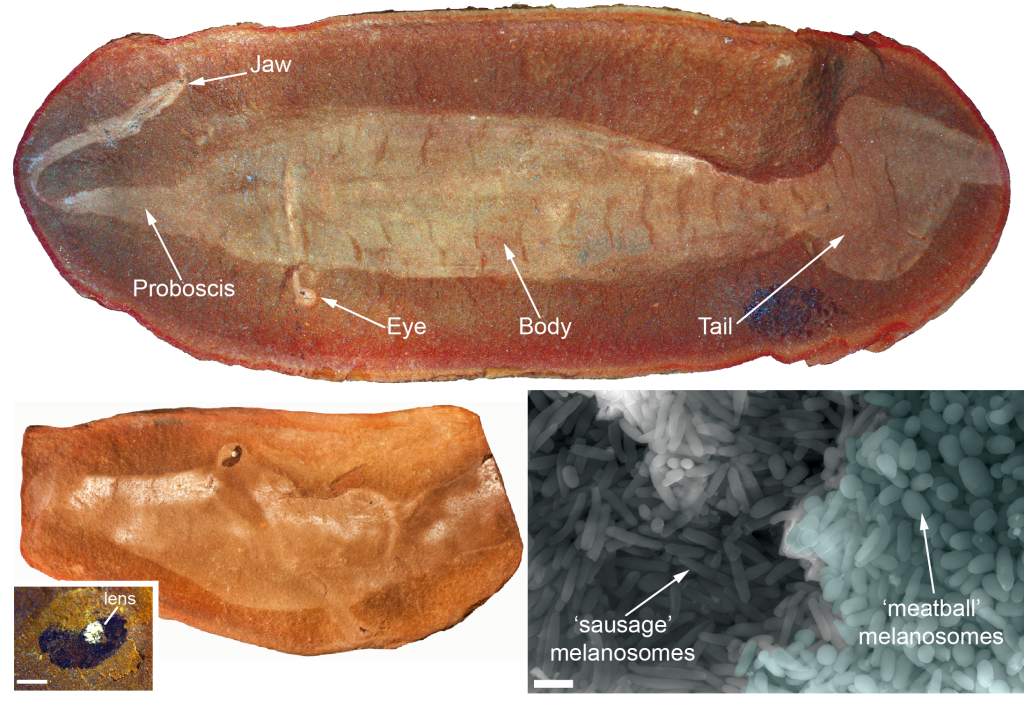
Similar information was recovered from the Tully monster (top). Examples of the of an incomplete Tully showing an eye with an infilled lens (bottom left). A scanning electron microscopy image of the melanosomes found in Tullimonstrum’s eye showing the two morphologies of melanosome(bottom right). The ‘meatball’-shaped melanosomes have been false-coloured to differentiate them from the ‘sausage’-shaped ones.
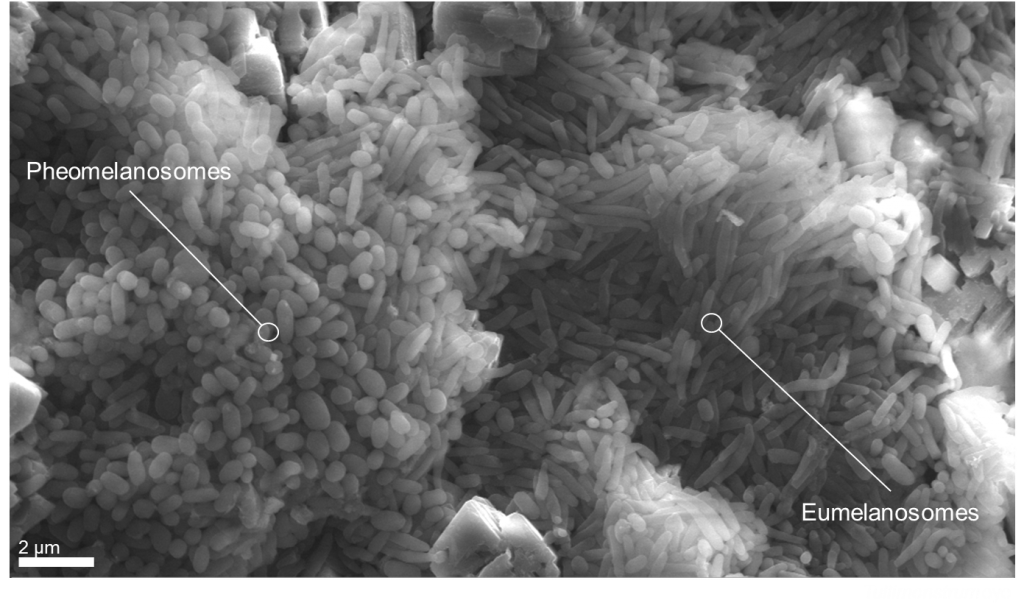
A high resolution SEM image showing the two melanosome morphologies found in distinct layers of the Tullimonstrum eye. The ‘sausage’-shaped eumelanosomes produce black melanin, whereas the ‘meatball’-shaped pheomelanosomes produce red melanin.
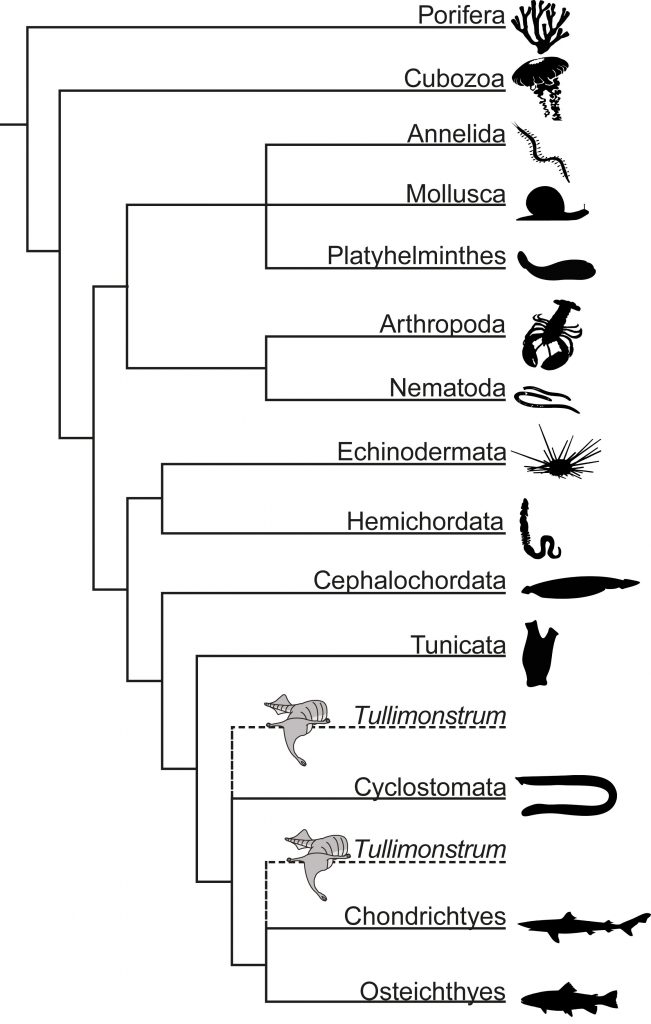
The dual melanosome morphology and the layered structures indicate that Tullimonstrum is a vertebrate. If the teeth of the Tully monster are indeed biomineralised then it’s likely that it a weird type of primitive fish.

Tullimonstrum has already been adopted as the state fossil of Illinois and now its ever-growing fame led U Haul to adopt it as the face of their ‘Venture across America’ advertising campaign.


